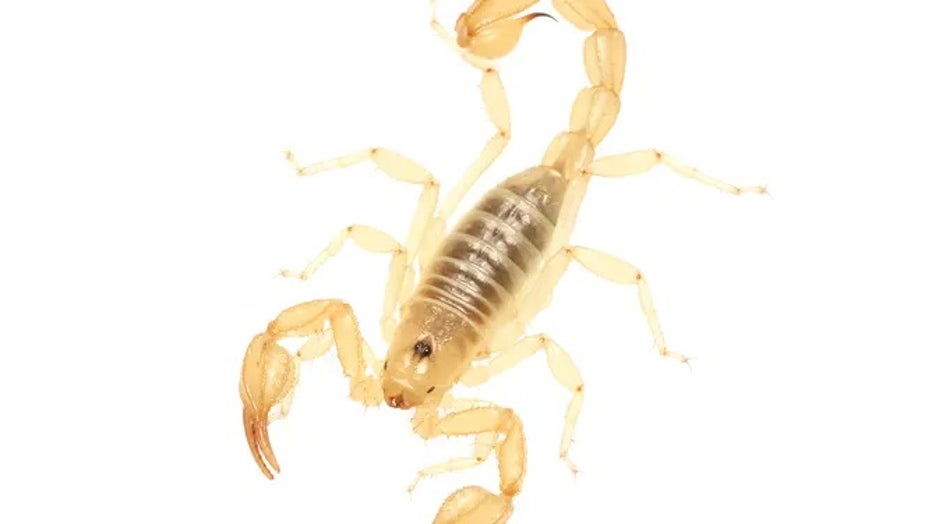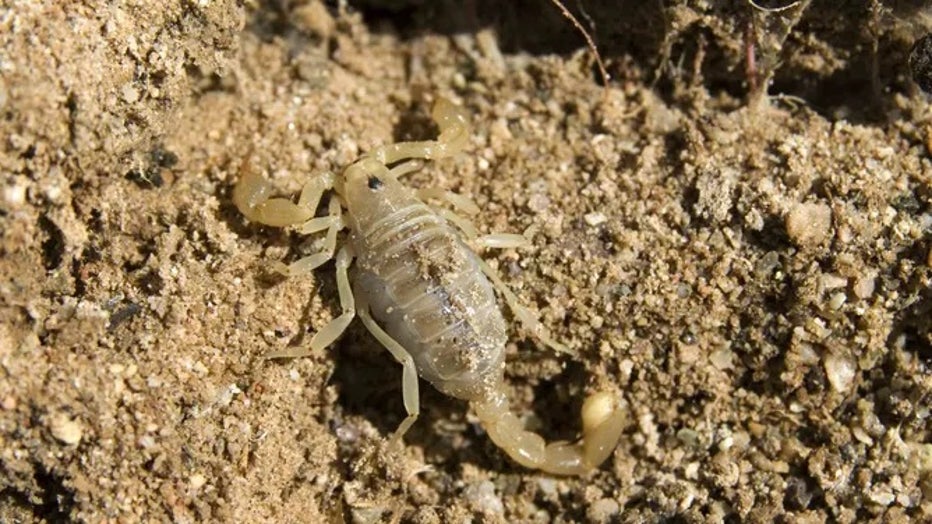2 new scorpion species discovered in dry California lake-beds

One of the newly described scorpion species. Named Paruroctonus soda, the scorpion is featured here carrying young on its back. (Prakrit Jain)
On Monday, a study published in the journal Zookeys formally recognized two new scorpion species in the Golden State.
Small enough to crawl in the palm of your hand, the scorpions were found in the dried-up lake beds of Soda Lake in Central California and Koehn Lake in the Mojave Desert.
One of the scorpion species was named Paruroctonus conclusus, while the other was named Paruroctonus soda, after the lake where it was found.
P. soda and P. conclusus have adapted so specifically to the dry, salty and high-pH habitats of Soda Lake and Koehn Lake, that the scorpions can only be found in those lakebeds and nowhere else.

P. conclusis on an illuminated white background. (Prakrit Jain)
The scorpions’ journey out of obscurity is largely due to two high school students, Harper Forbes and Prakrit Jain, using the nature app iNaturalist.
iNaturalist is a community science platform and joint initiative by the California Academy of Sciences and the National Geographic Society.
According to a California Academy of Sciences press release, Forbes and Jain were reviewing thousands of observations uploaded by other iNaturalist users when they came across two unknown scorpion species.

Harper Forbes (left) and Prakrit Jain (center) with California Academy of Sciences Curator of Arachnology Lauren Esposito (right). (Gayle Laird / California Academy of Sciences)
The first species Forbes and Jain learned about was the one that would later be known as P. conclusis. They initially learned about one of those species in 2019, based on an observation uploaded to iNaturalist near Koehn Lake.
CREEPY CRAWLIES SURFACE: HEAT, MONSOONAL ACTIVITY INCREASE SCORPION ACTIVITY
"We weren’t entirely sure what we were looking at," Jain said in the press release. "Over the next couple years, we studied scorpions in the genus Paruroctonus and learned they frequently evolve to live in alkali playas like Koehn Lake."
"When we returned to that initial observation, we realized we were looking at an undescribed Paruroctonus species," he added.

The observation Jain and Forbes came across in 2019. The featured scorpion later became known as P. conclusis. (Sarah Crews)
The second scorpion species, which later was named P. soda, was discovered after an observation of the then-unknown species was uploaded to iNaturalist.
Jain and Forbes then worked with California Academy of Sciences Curator of Arachnology Lauren Esposito to identify the species. Their collaboration led to the two scorpion species being formally described in the study featured in ZooKeys.

